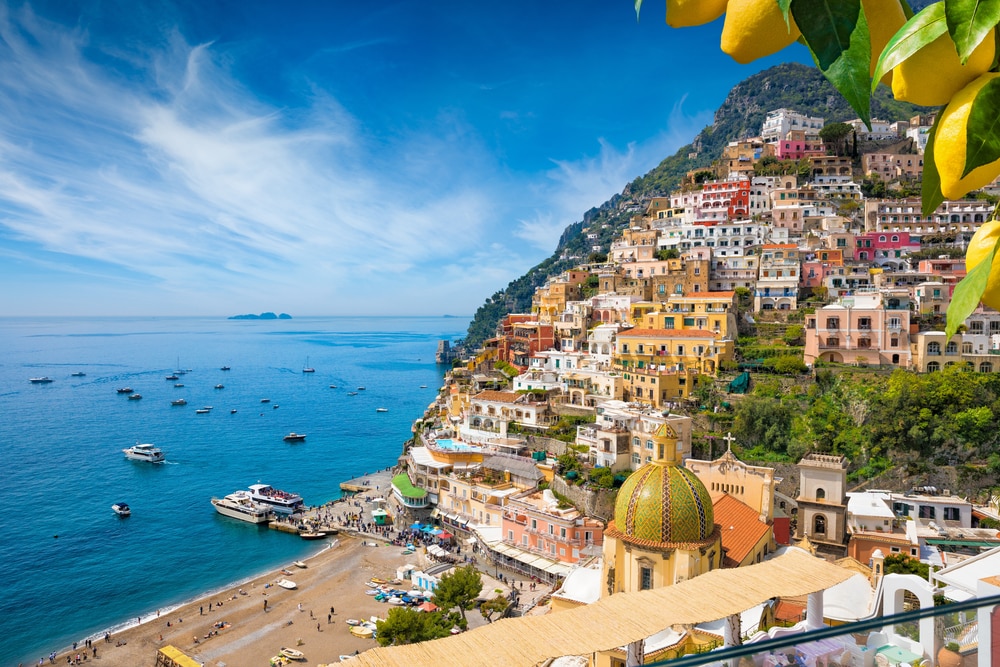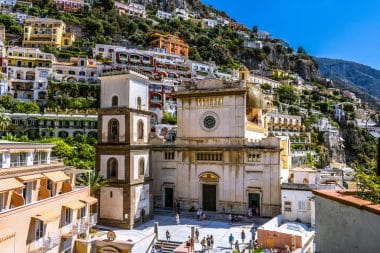Positano is a romantic holiday resort in Italy and one of the most beautiful towns on the Amalfi Coast. The place, built perpendicular to a cliff, was originally a fishing village, but artists began to come to Positano in the 1950s. Today it is a sophisticated holiday resort that has retained its historic charm. Positano is a pedestrian town (with lots of stairs) that is very picturesque with its pretty pastel-colored houses and lush flowers.
When is the best time to travel to Positano?
If you’re wondering when to visit this magnificent city, the season starts at Easter and ends in September. May and June are generally the best months to visit, as prices are lower, temperatures are perfect, and traffic is low. The tourist season starts at Easter and lasts throughout the summer until the end of September. If you want to travel in the summer, you should go to Positano in May and June, as prices are generally lower than in July and August. May is by far the best month to visit the Amalfi Coast, with perfect temperatures, abundant blooms, and very few tourists – I was there in September, and there were still the summer crowds that made it hard to relax and enjoy the region.
How to get to Positano
The closest airport to Positano is Naples. The best way to reach Positano is by boat or bus. The infamous winding, cliff-lined road on the Amalfi Coast that leads to Positano requires strong nerves from motorists, and parking above the town is limited, though some hotels offer private parking. Ferries to Positano run from Sorrento, Amalfi, Salerno and Naples (Napoli), but less frequently outside the summer season.
Places to visit in Positano:
-
-

Chiesa di Santa Maria Assunta, Image: Marco Porcu / shutterstock Chiesa di Santa Maria Assunta: In most photos of Positano, the colorful majolica dome of the main church is omnipresent (and the only real attraction in the city). If you’re coming on a weekend, you’ll probably have the added benefit of seeing a wedding; it is one of the most popular churches in southern Italy for the exchange of vows. The church is known for a black Byzantine Madonna and Child from the 13th century above the main altar. The icon was allegedly stolen from Constantinople by pirates and smuggled west. During restoration work on the square and in the crypt, a Roman villa was discovered, but it was still being excavated at the time of writing and was closed to the public.
- Spiaggia del Fornillo: From the main beach of Positanos it is an easy walk to the west, with an acceptable number of steps (hooray!) to the Spiaggia del Fornillo. Ditch your stilettos and lace up your sneakers: Fornillo is more laid-back than its swanky neighbor and is also home to a handful of summery beach bars that can get quite lively after sunset. To reach Fornillo, go to the western end of Spiaggia Grande, at the ferry port, and climb the steps. Walk past Torre Trasita and continue along the path that passes dramatic rock formations and a verdant gorge until you reach the charming beach.
-

The Amalfi Coast on the Mediterranean Sea south of Naples in Italy, Image: de.depositphotos.com/ Franco Senesi: Nestled among trendy boutiques and lemon-themed ceramic shops, Franco Senesi is a bold, uncluttered showroom with rooms showcasing works by over 20 modern Italian artists and sculptors. You can walk around here at your leisure and admire (and even buy) works of art suitable for most tastes. The palette ranges from exquisite life drawings to colorful surrealist landscapes to angular abstract sculptures. Shipping can be arranged.
-
- Visit Fiordo di Furore: This place is an absolute must-see when visiting Positano. It is located 4 miles southwest of Amalfi. The place is a narrow opening between the mountains that forms a picturesque, hidden beach. Above the beach runs the Amalfi highway, which connects the two sides of the fjord via a bridge and offers the best view of the beach. You can relax, swim or jump off the cliffs here. Tip: The place is very popular and often crowded. Be there early in the morning if you want to enjoy the place in a quiet environment.
- Day trip to Capri: Capri is one of the most popular islands in Italy and a very attractive destination for boat trips for tourists visiting Positano. The drive there takes about 20-50 minutes, depending on what you choose. You can either take a ferry and explore the island on your own, join an organized group tour, or book a private boat tour. The island is known for upscale hotels, restaurants with delicious food, chic bars, and luxury shopping from fashion to limoncello. Enjoy your time at La Fontelina beach club, eat at the popular da Polina restaurant, hike Pizzolungo, or hop on a boat and explore the Blue Grotto, a dark cave where the sea glows electric blue. These are just a few things to do in Capri, but there are many more.
Können wir Ihnen helfen?
Benötigen Sie Unterstützung bei Ihrer Reiseplanung oder weitergehende Informationen zu einzelnen Reisezielen? Wir freuen uns über Ihre Kontaktaufnahme.




